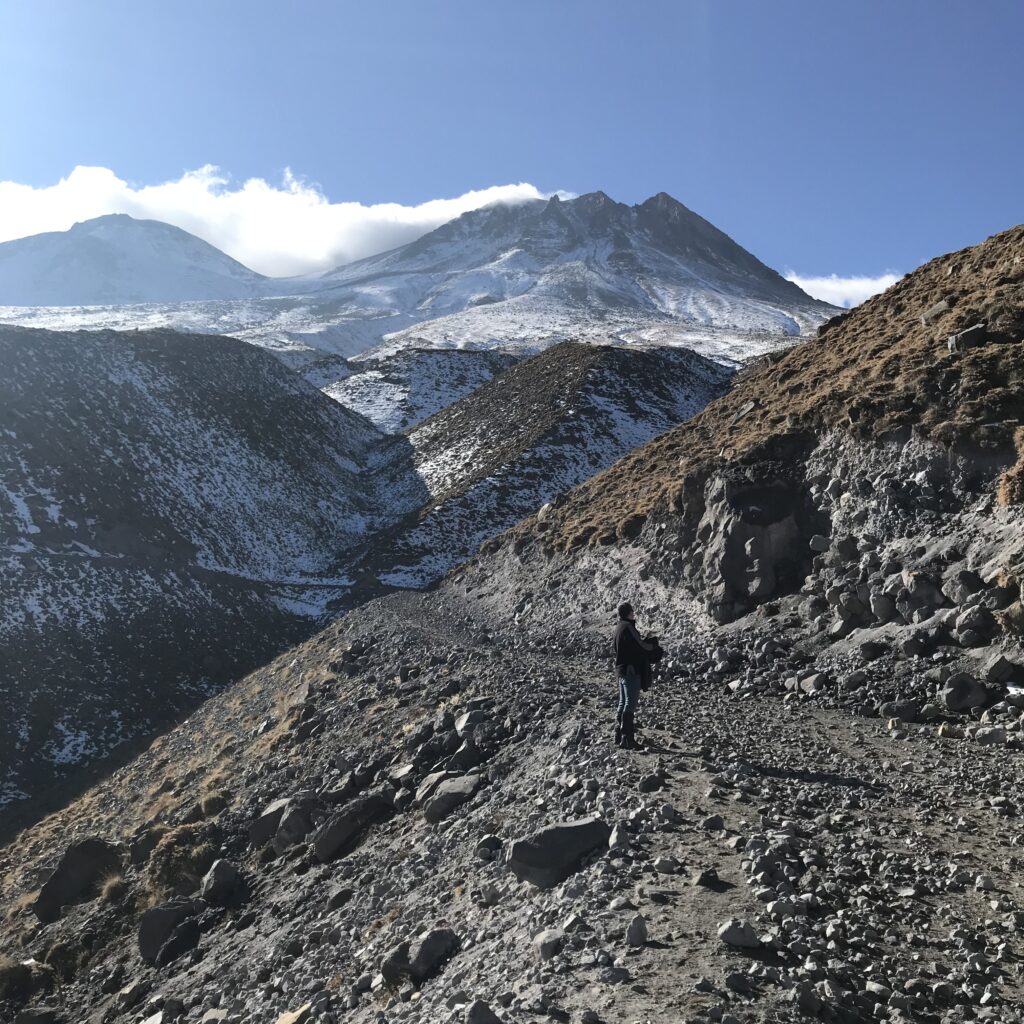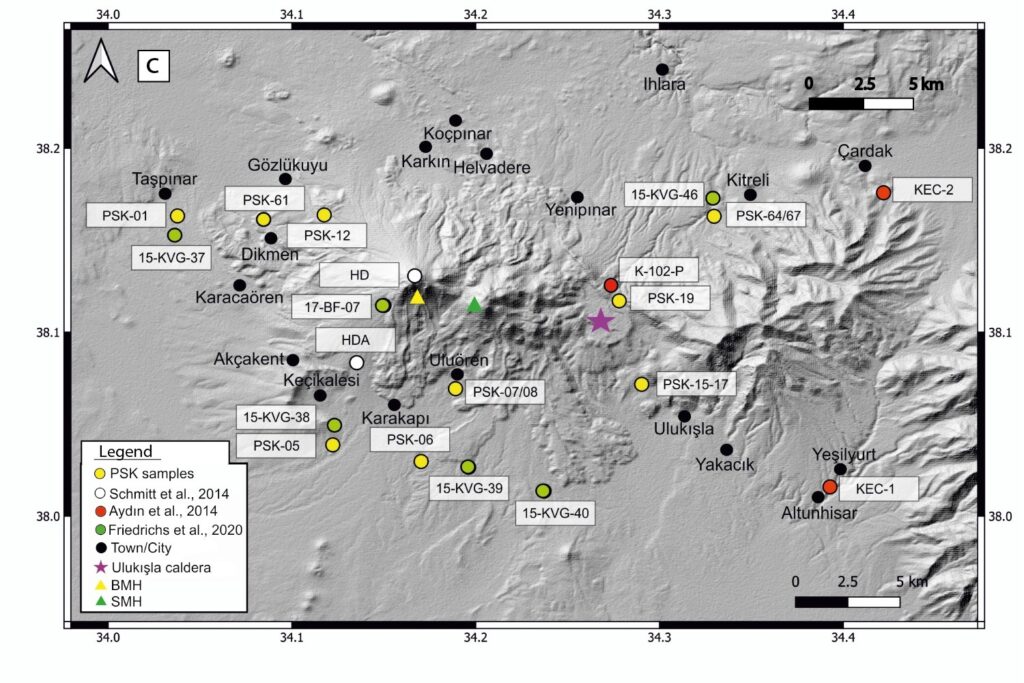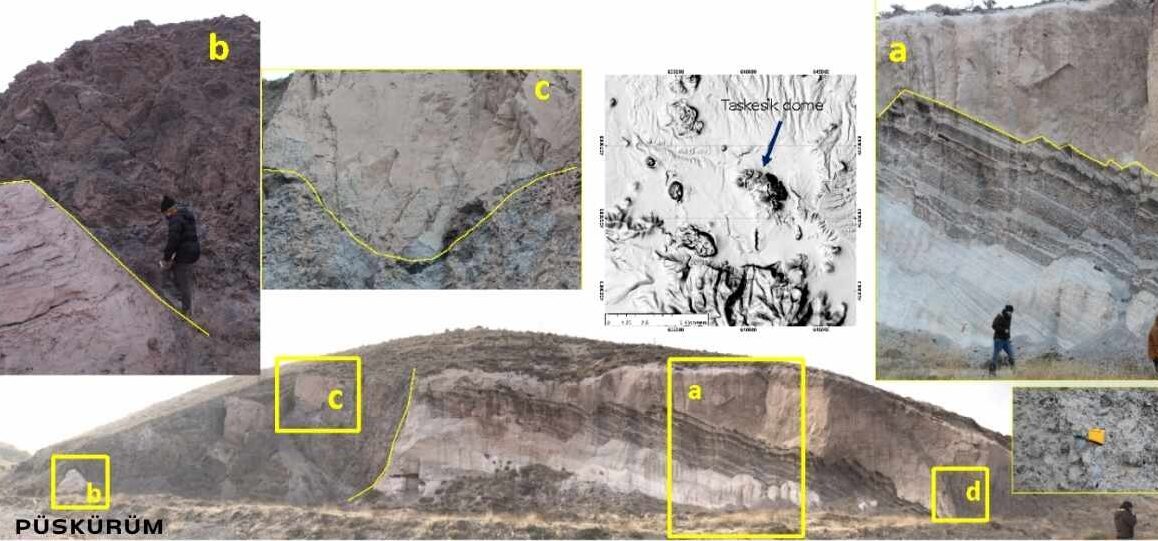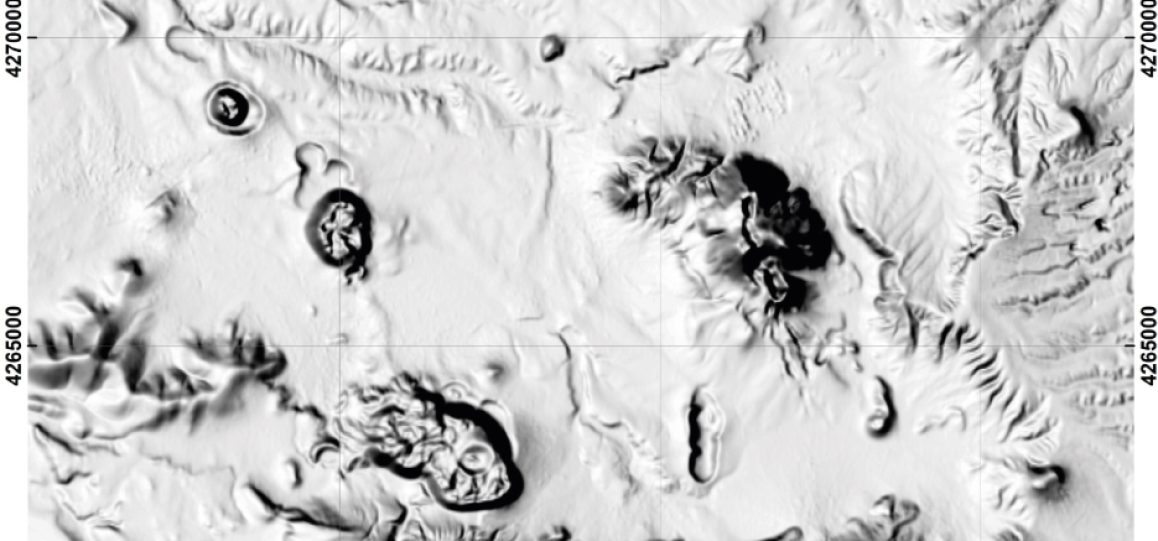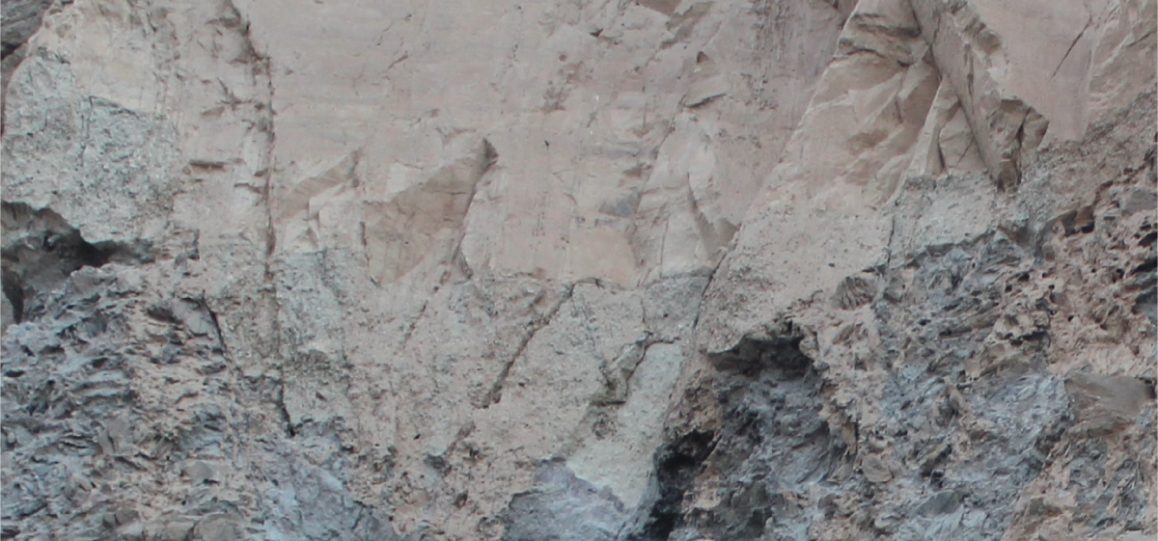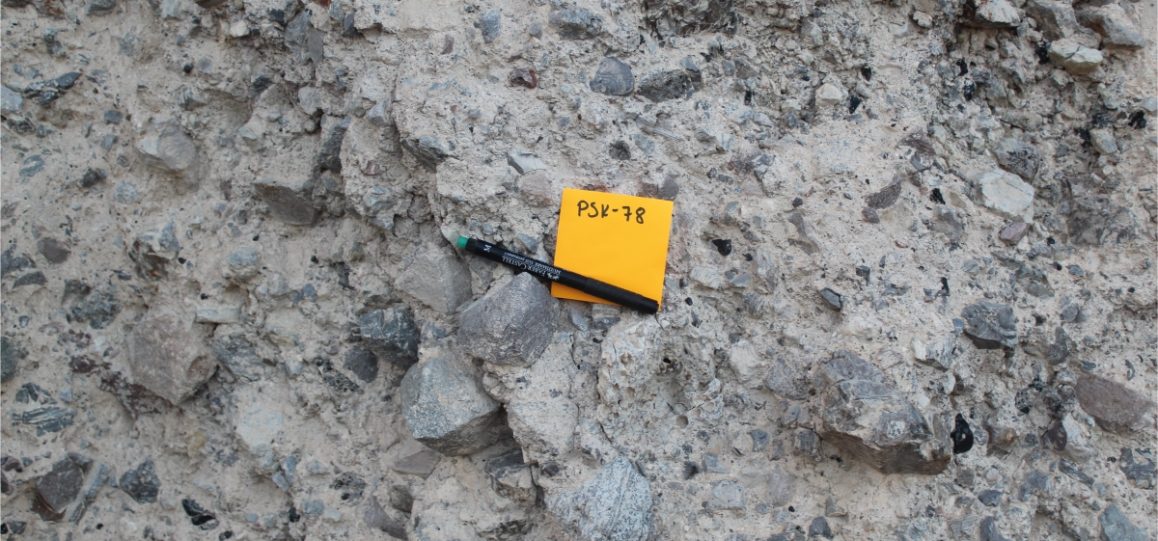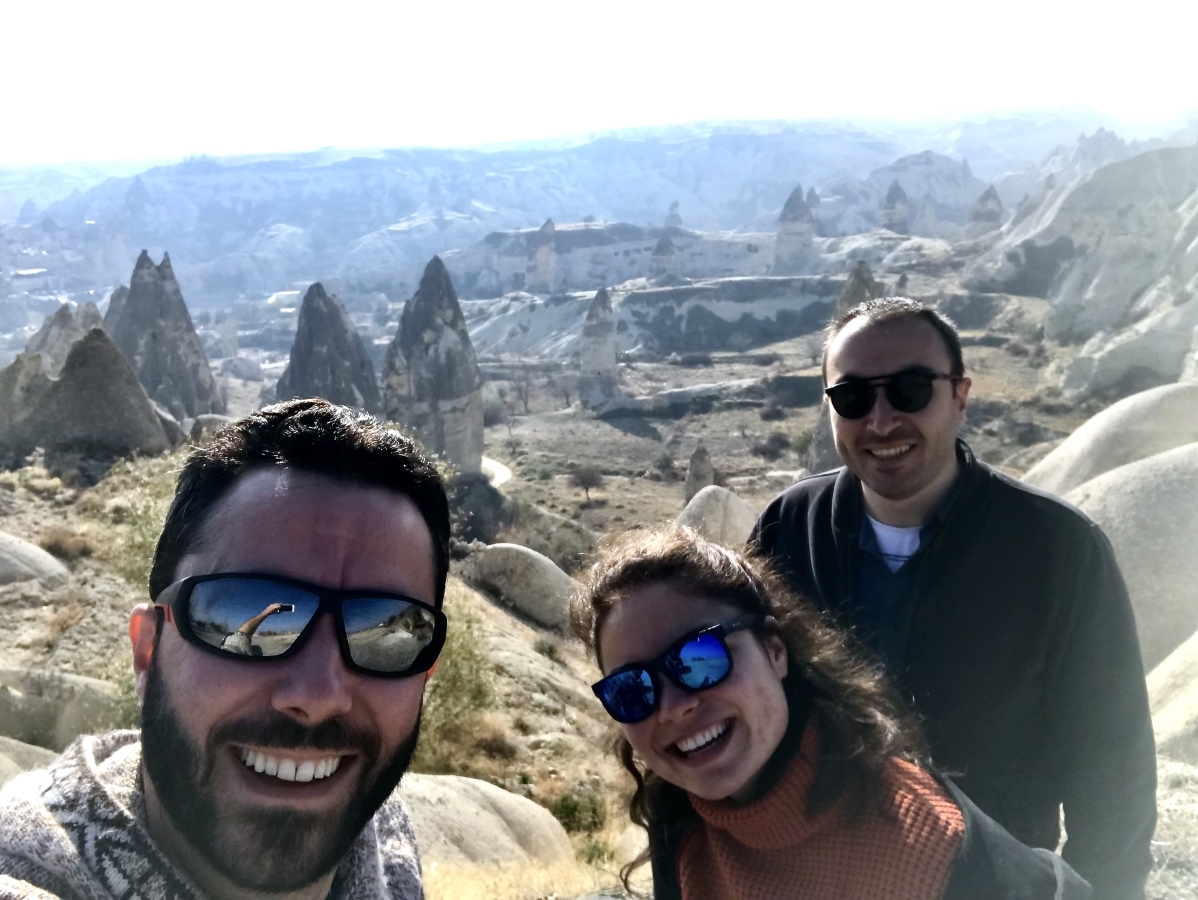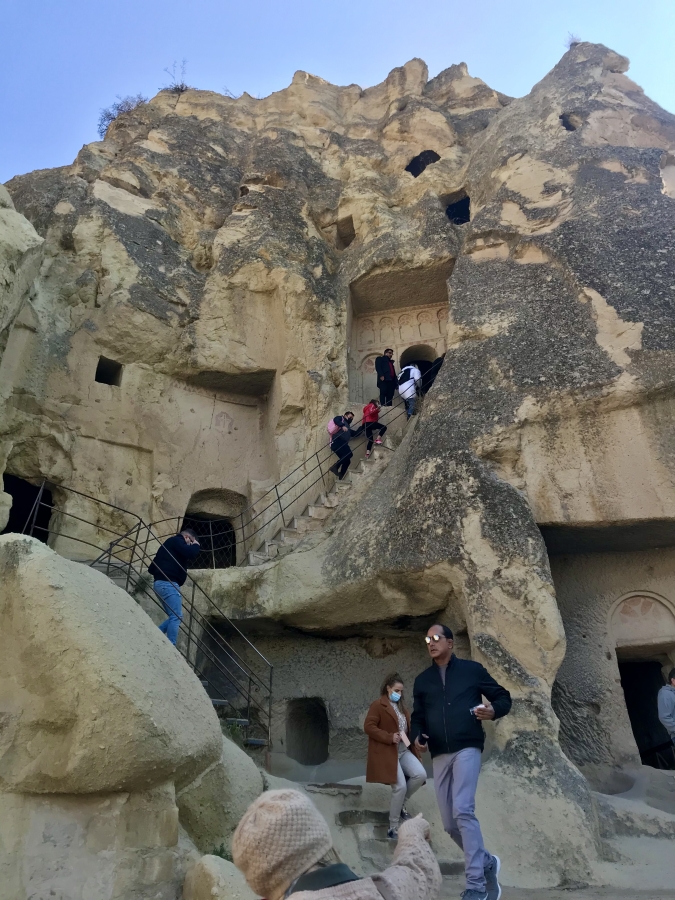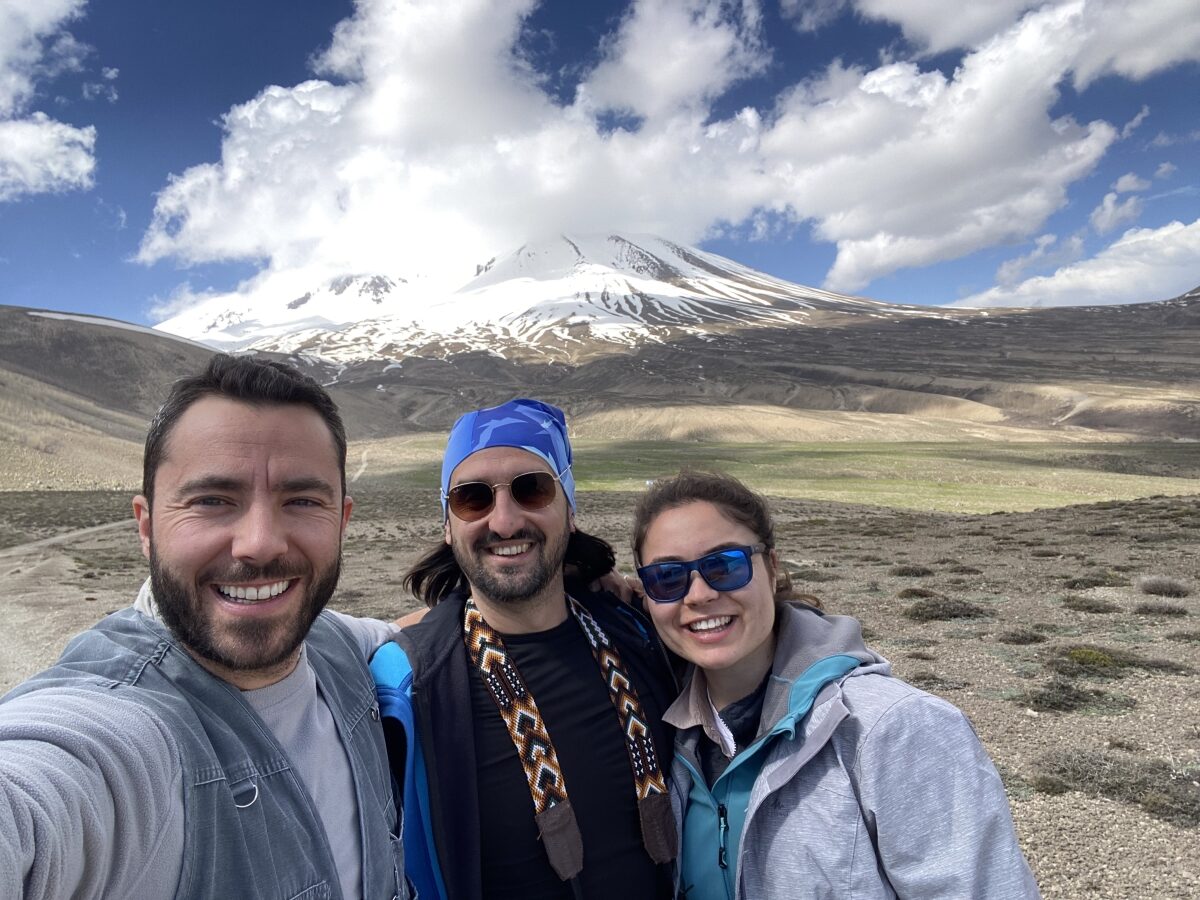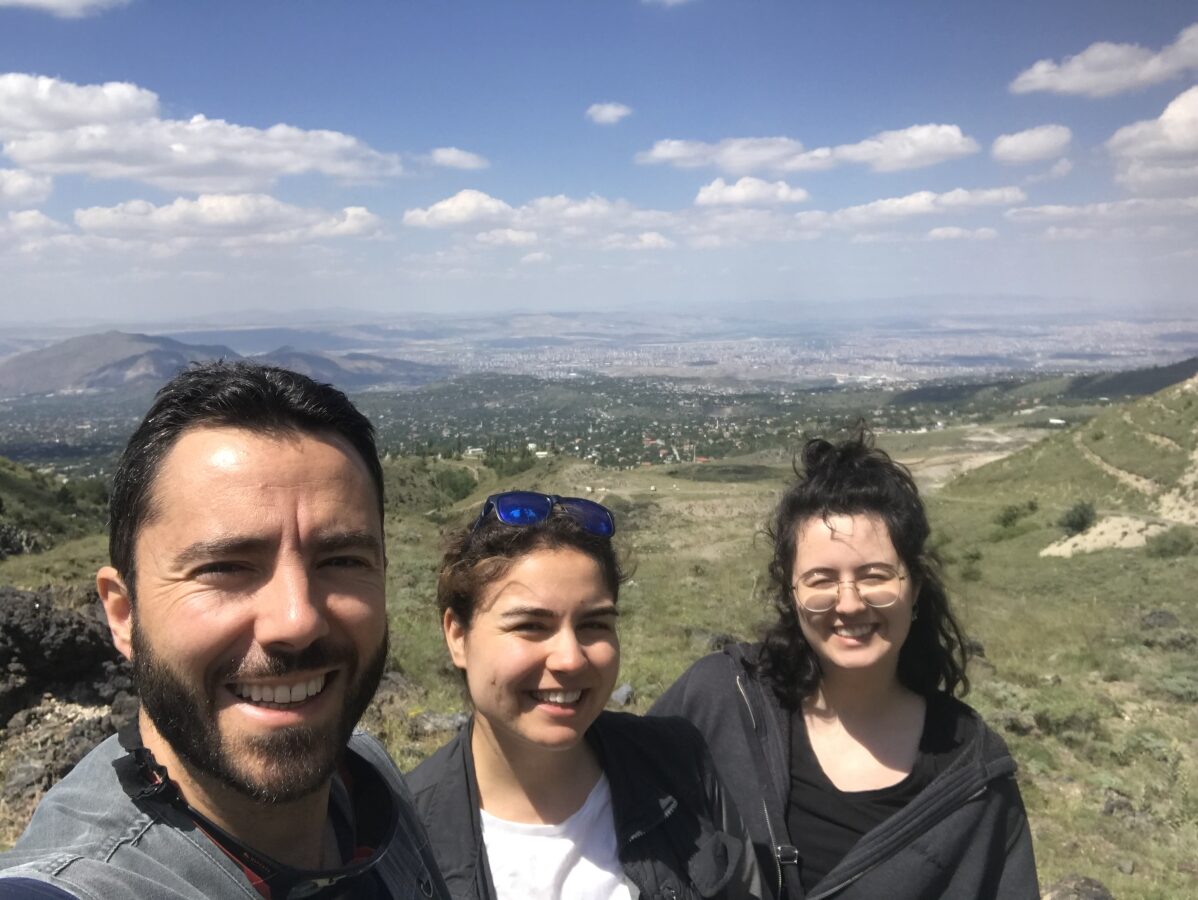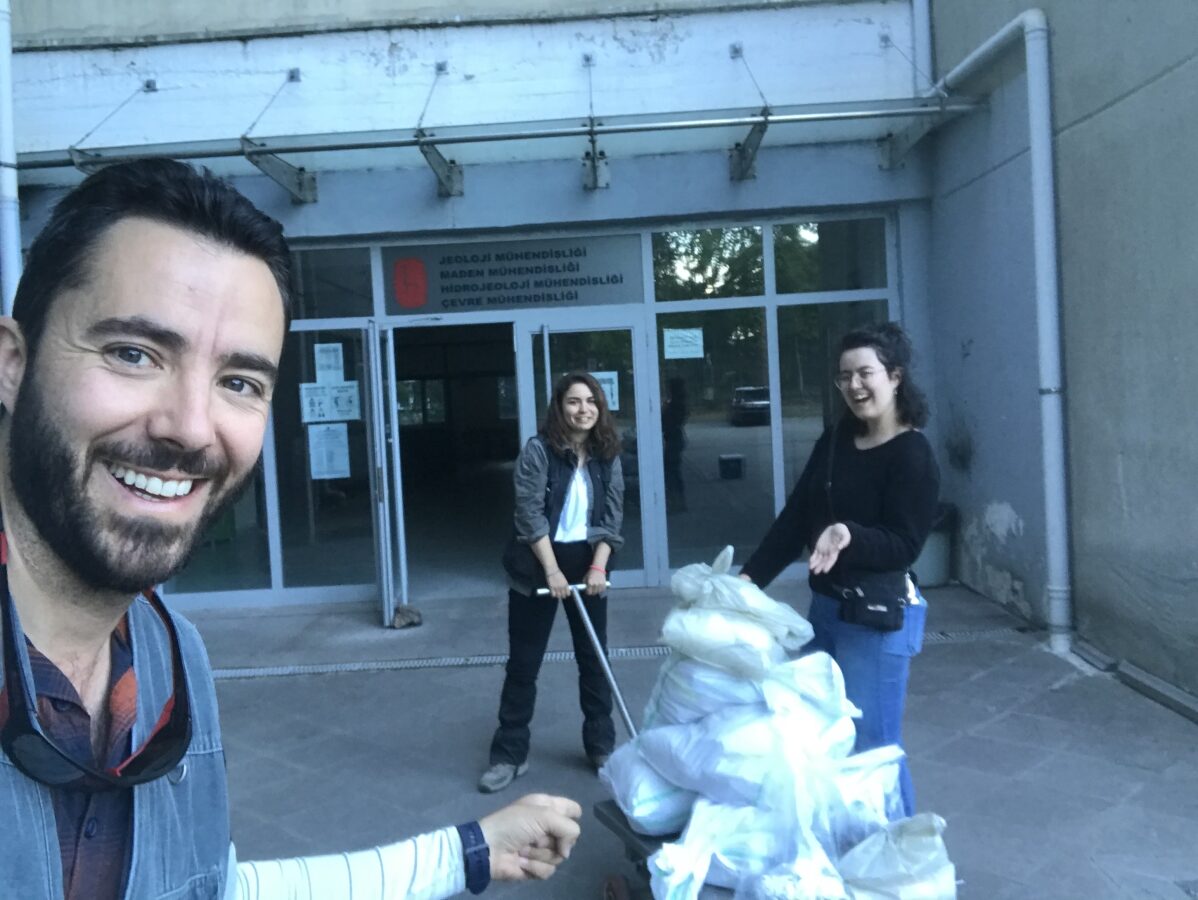FIELDWORK INVESTIGATIONS
Although recent studies have characterized some proximal deposits around the main volcanoes of CAVP, they mostly focussed on effusive products (such as lava flows and domes). Therefore, fieldwork in this region is needed to identify, log, sample and map the distribution of the still undifferentiated pyroclastic deposits produced by the largest and recent explosive eruptions.
At the moment, the PÜSKÜRÜM team have carried out three fieldwork campaigns within in the Central Anatolian Volcanic Province (CAVP) and around Hasandağ and Erciyes stratovolcanoes, Acigöl caldera, and Cappadocian Ignimbrites.
Hasandağ
Map of the Hasandag area within the Nidge Volcanic Complex showing the points of observation and how close the lava fronts are to several surrounding towns (black dots), which have been built above recent pyroclastic deposits (the aim of this study). Hasandağ, which is one of the most active volcanoes in Turkey with a recent increasing of fumarolic and seismic activity, has experienced different large explosive eruptions (including caldera collapses emplacing widespread ignimbrites).
References:
- Aydar, E. & Gourgaud, A., 1998. J. Volcanol. Geotherm. Res. 85, 129–152 (1998). https://doi.org/10.1016/S0377-0273(98)00053-5
- Schmitt, A.K., et al. (2014). Identifying the Volcanic Eruption Depicted in a Neolithic Painting at .atalh.yük, Central Anatolia, Turkey. PLoS ONE 9(1): e84711. https://doi.org/10.1371/journal.pone.0084711
- Friedrichs, et al. (2020). Late Pleistocene eruptive recurrence in the post-collisional Mt. Hasan stratovolcanic complex (Central Anatolia) revealed by zircon double-dating. J. Volcanol. Geotherm. Res. 404. https://doi:10.1016/j.jvolgeores.2020.107007
Acigöl Caldera
Acigöl is a bimodal volcanic complex with a shallow central caldera of 12 x 8 km, and consists of a 150 km2 rhyolitic field surrounded by scattered mafic scoria cones, rhyolitic tuff cones and associated lava flows. Açigöl caldera is the source of the youngest Cappadocian Ignimbrites (the late Pleistocene LAT and UAT).
The tephra layers from Taskesik tuff cone (inner part of Acigöl caldera, see map) are faulted (a) by the uplift during emplacement of the Taskesik obsidian dome (b). The PDCs of the pinky Upper Açigöl Tuff (UAT) are deposited continuously atop of the Taskesik tuff cone deposits (a) without any paleosoil neither hiatus of time between these two deposits (coetaneous eruptions), and also cut by the faults. On top of the Taskesik lava dike/dome there is a sequence of volcanoclastic reworked material (c). Detail of coignimbritic lag breccia (d) thicker at the food of the tuff cone. The UAT is the last (~160ka) of the famous Cappadocian Ignimbrites.
References:
- Druitt, et al. (1995). Late-Quaternary rhyolitic eruptions from the Acıgöl Complex, central Turkey. Journal of the Geological Society (London, United Kingdom) 152, 655–667. https://DOI: 10.1144/gsjgs.152.4.0655
- Schmitt, et al. (2011). Acigöl rhyolite field, Central Anatolia (part 1): High-resolution dating of eruption episodes and zircon growth rates. Contrib. Mineral. Pet. 162 (6), 1215–1231. doi:10.1007/s00410-011-0648-x
- Uslular, et al. (2022). New findings on compositionally distinct maar volcanoes: A case study from Acıgöl (Nevşehir) caldera (Central Anatolia, Turkey) . Front. Earth Sci.
Cappadocian Ignimbrites
The Cappadocia is famous due to its spectacular badlands-type landscape resulted by the deposition and posterior partial erosion of thick, widespread and colourful ignimbrite layers (part of the UNESCO World Heritage since 1985). 20,000 km2 covered with more than 300 km3 of pyroclastic material (large explosive eruptions started ~10 Millions of years ago).
In the top-left photo we can see a panoramic view of the “fairy chimneys” valley (fieldwork participants from left to right: Ivan Sunyé Puchol, Rengin Özsoy and Efe Akkas). The soft pyroclastic material has been easily carved by Phrygians (old Anatolian civilization) to build their houses since the XIII century BCE, which later the Christians (Byzantines Roman empire) made churches (top-right photo) and fortress to defend them against invaders (e.g. Uçhisar Castle, see photo gallery).
Participants on the fieldwork: Ivan Sunyé Puchol, Rengin Özsoy and Efe Akkas.
References:
- Aydar E et al (2012) Correlation of ignimbrites in the central Anatolian volcanic province using zircon and plagioclase ages and zircon compositions. J Volcanol Geoth Res 213:83–97
- Froger, J.-L., Lénat, J.-F., Chorowicz, J., Le Pennec, J.-L., Bourdier, J.-L., Köse, O., Zimitoglu, O., Gündogdu, N.M., Gourgaud, A., 1998. Hidden calderas evidenced by multisource geophysical data; example of Cappadocian Calderas, Central Anatolia. J. Volcanol. Geotherm. Res. 85, 99–128. doi:https://doi.org/10.1016/S0377-0273(98)00052-3
- Le Pennec, J.-L., Bourdier, J.-L., Froger, J.-L., Temel, A., Camus, G., Gourgaud, A., 1994. Neogene ignimbrites of the Nevsehir Plateau (Central Turkey), stratigraphy, distribution and source constraints. Journal of Volcanology and Geothermal Research 63, 59–87.
Mount Erciyes
Mount Erciyes is the largest (3917 m height and ~40km long) stratovolcano in Central Anatolia. It has erupted several times during the Holocene (last ~13 ka), including the Dikkartin, Karagüllü, and Perikartin pyroclastic materials and lava domes. Based on an erupting volcano designed in gold coins, it is thought that Erciyes could have erupted during Roman empire times.
From left to right: view of the Erciyes somital crater from southern flank; panoramic view of the Kayseri city (> 1 M people) from the northern flank of Erciyes; a trolley full of samples collected during the second fieldwork (Department of Geology, Hacettepe University, Ankara).
Participants on the fieldwork: Ivan Sunyé Puchol, Xavier Bolós, Rengin Özsoy and Simge Kaya.
References:
Friedrichs et al. (2020). New insights into source and dispersal of Mediterranean S1 tephra , an early Holocene marker horizon erupted at Mt . Erciyes ( Turkey ) 249. doi:10.1016/j.quascirev.2020.106606
Sarıkaya, M.A., Zreda, M., Çiner, A., 2009. Glaciations and paleoclimate of Mount Erciyes, central Turkey, since the Last GlacialMaximum, inferred from36Cl cosmogenic dating and glacier modeling. Quat. Sci. Rev. 28 (23–24), 2326–2341.
Şen et al. (2003). Volcanological evolution of Mount Erciyes stratovolcano and origin of the Valibaba Tepe ignimbrite (Central Anatolia, Turkey). J. Volcanol. Geotherm. Res. 125, 225–246. doi:10.1016/S0377-0273(03)00110-0
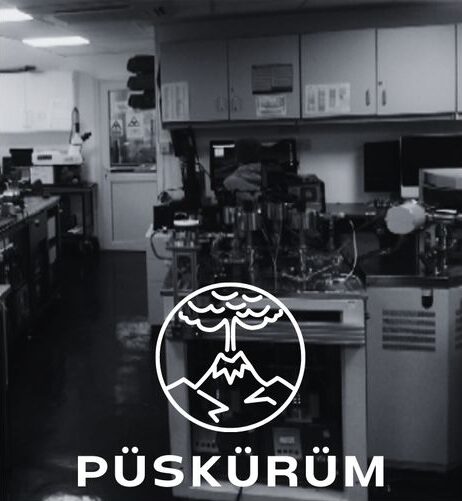
Willing to know more about PÜSKÜRÜM?
Discover the LABORATORY WORK…
Experiments are based on two methods:
GEOCHEMISTRY
Major and trace elements on volcanic glass and mineral crystals.
GEOCHRONOLOGY
14C, 234U/ 230Th and 40Ar/39Ar
